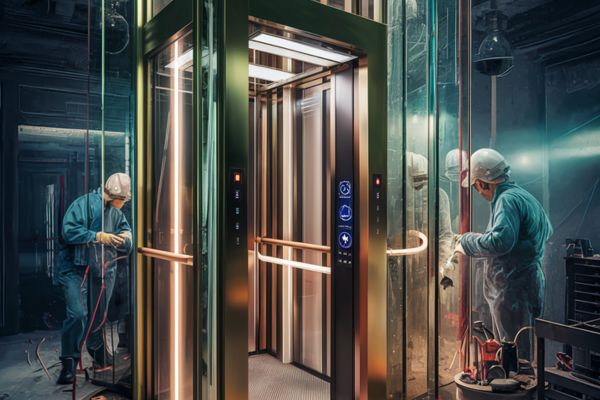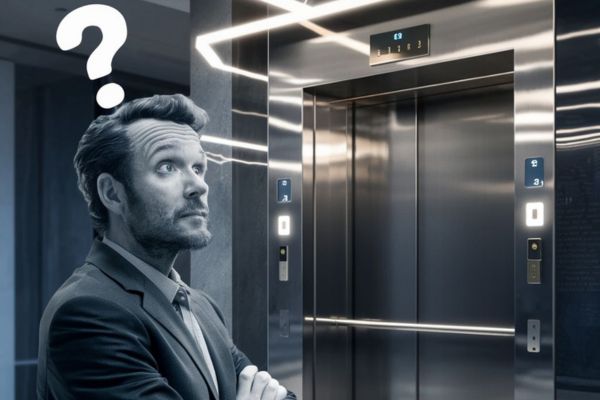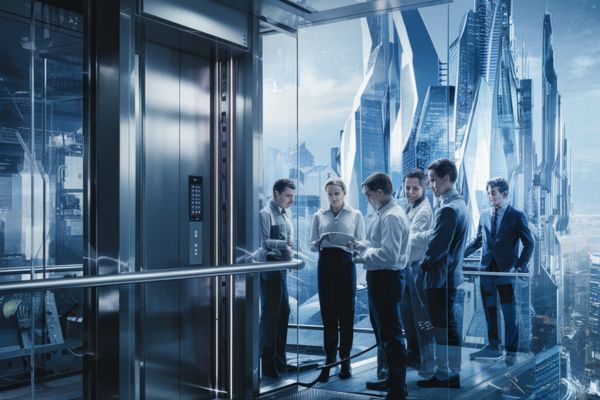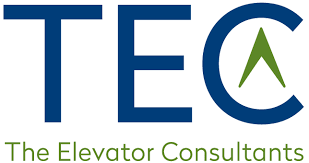As buildings age, so do their elevators, bringing to the fore the critical concept of elevator modernization. Elevators play a pivotal role in all buildings, ensuring seamless vertical transportation. The essence of elevator modernization emerges as a critical endeavor for enhancing the functionality, safety, and potential aesthetics of these vertical transportation systems. This guide delves into modernizing building elevators, spotlighting the significance of this process for building owners and managers.
Understanding elevator modernization

Elevator modernization encapsulates the process of upgrading essential mechanical systems, controls, and safety features of an elevator to align with contemporary standards. It may also encompass aesthetics of the interior if budgets allow. This vertical transportation modernization is crucial for improving efficiency, ensuring compliance with the latest safety regulations, and significantly enhancing the user experience. An elevator modernization starts a new life cycle of elevators and plays a vital role in maintaining the building’s competitiveness and value.
What is elevator modernization?
Elevator modernization involves updating the critical mechanical components of an elevator system to improve its efficiency, safety, and performance. The core of modernization lies in updating the existing elevator system, making them more reliable, enhancing performance and aligning them with current technological and safety standards. The proper elevator system must be installed to ensure the desired life cycle of 10 years to 25 years or more is captured. A building must follow a best practice methodology to ensure all appropriate components are reused, recycled, refurbished or replaced.

An elevator modernization brings numerous benefits:
Improved Efficiency and Performance
Modernized elevators operate more smoothly, with less waiting time and breakdowns if the correct application is installed.
Enhanced Safety and Accessibility
Upgrades often include the latest safety features and accessibility options, ensuring compliance with ADA and other regulations.
Increased Energy Savings
New technologies make elevators more energy-efficient, significantly reducing operational costs.
Updated cabs and User Experience
Updating the interior and systems improves the aesthetic appeal and user experience, contributing to the building’s overall value.
Client, and tenant user satisfaction
Installing a new elevator system usually comes with less issues allowing a positive user experience.
New technologies in elevator modernization
The landscape of elevator technology is continually evolving, with advancements aimed at improving every aspect of elevator operation:
- Destination Dispatch Systems: Enhance efficiency by grouping passengers going to the same destination. Some buildings benefit from this application.
- Regenerative Drives: Recapture energy during braking, reducing overall energy consumption.
- Advanced Door Systems: Include safety features to prevent accidents and ensure smooth operation.
- Touchless Controls and In-elevator Entertainment: Elevate the user experience, making journeys more enjoyable and hygienic.
The elevator modernization projection

A successful elevator modernization project follows a structured process:
- Initial Consultation: Engaging with an elevator consultant who has a clear understanding of the building’s operations to assess needs. It is common for buildings to engage an elevator service provider directly for a consultation which is another option as long as the building has the elevator industry expertise in house.
- Project Assessment: Conduct a thorough evaluation to determine the best course of action for the building to engage in aa elevator modernization based on budget, operational needs and code requirements.
- Solution Selection: Choosing modernization solutions tailored to the building’s requirements which includes all mechanisms of an elevator modernization so avoid all change orders.
- Permitting and Approvals: Navigating the legal landscape to obtain necessary permissions and approving all submittals are critical to make sure all work is entailed.
- Construction and Installation: Executing the modernization plan with minimal disruption and within budget is critical for a successful project.
- Inspection, Testing and Punchout: Ensuring the updated systems meet all operational and safety standards, all manuals are onsite, training has taken place and specification was followed.
Planning an elevator modernization project requires careful consideration of several key factors:
- Age and condition of the current system.
- Compliance with the latest building codes and safety standards.
- Available budget and financing options.
- Parts availability.
- Choosing a contractor with the requisite expertise and track record.
- Planning for potential downtime and its impact on building operations.
These factors must be evaluated to determine if it is time to complete an elevator modernization at the building. Assigning a value of importance to these factors can provided a guideline to determine if a modernization is needed. A elevator consultant can also assist in this process.
Elevator modernization consultants
Elevator modernization consultants play a pivotal role. They are indispensable allies in the modernization process, offering expertise in evaluating vertical transportation systems and recommending the most effective solutions. These professionals provide comprehensive project management, ensuring that every aspect of the elevator modernization project aligns with safety standards and operational goals.

The Future of Elevators
Looking ahead, elevator technology is set to become even more integrated with maintenance, predictive maintenance, and sustainability amongst others. Innovations like biometric access and AI-driven operation may redefine future elevator experience, making it more personalized, efficient, and environmentally friendly.
Elevator modernization stands as a strategic investment in the future of vertical transportation, offering substantial benefits for building owners, tenants, and the environment. Through careful planning, collaboration with experienced elevator modernization consultants, and leveraging the latest elevator modernization solutions, stakeholders can ensure their elevators meet and exceed standards of performance and safety.
This guide serves as a roadmap for navigating the complexities of elevator modernization, highlighting the enduring value of upgrading these essential systems for the betterment of buildings and their occupants.
Elevator modernization is an essential investment for the future, enhancing the value, safety, and performance of buildings. By embracing modernization, building owners and managers can ensure their properties meet the highest standards of efficiency, accessibility, and user satisfaction, all while contributing positively to the environment.
Have a Question About Elevators?
Talk to a Professional Elevator Consultant
Additional Resources
For those seeking to delve deeper into the world of elevator modernization, the following resources offer a wealth of information:
- United States Access Board
- National Association of Elevator Contractors
- International Association of Elevator Consultants
This comprehensive guide underscores the importance of modernizing elevators, not just as a regulatory compliance or maintenance task, but as a strategic enhancement to the built environment, promising a safer, more efficient future for vertical transportation.
Have a Question About Elevators?
Talk to a Professional Elevator Consultant
FAQ – About The Topic Title
What is the Modernization of Elevators?
Modernization of elevators involves the comprehensive upgrading of the elevator’s mechanical systems, control mechanisms, and safety features to meet current standards and expectations.
What is the New Technology for Elevators?
Several technologies are being introduced in the elevator industry. Machine Room Less (MRL) has been in the market for a while however people are learning about them. Modular Elevators come up in some applications. There always new door systems, microprocessors, in elevator entertainment, and others, introduced seems like weekly.
How Long Does it Take to Modernize an Elevator?
The duration of an elevator modernization project can vary widely depending on the complexity of the upgrades, the current conditions, and the specific goals of the modernization. Simple upgrades may take a few weeks, while comprehensive modernizations involving significant system overhauls can last several months. Planning for downtime and ensuring minimal disruption to building operations is a critical part of the project timeline.
Why is Elevator Modernization Important?
All buildings have different operation needs and pending the current situation dictates the importance of an elevator modernization. They maybe issues like:
Safety and Compliance; Efficiency and Performance; Reliability, and sometimes just Aesthetics

